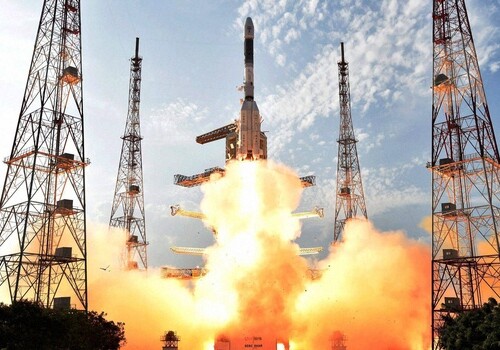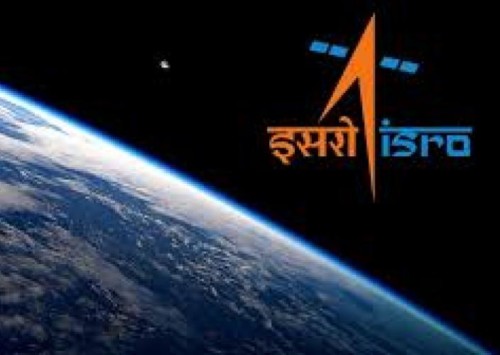Eight satellites launched by India
In a first, the Indian Space Research Organisation (ISRO) launched eight satellites from one rocket in two different orbits. India’s ocean and weather observing satellite SCATSAT-1 was injected in space along other domestic and foreign satellites.
The Indian Space Research Organisation (ISRO) today launched its weather satellite SCATSAT-1 and seven co-passenger satellites. The satellites were launched in two different orbits using the space organisation’s Polar Satellite Launch Vehicle (PSLV). This will be PSLV’s thirty seventh flight.
PSLV C-35 launched the 371 kg SCATSAT-1 along with other domestic and foreign satellites which together weighed about 304 kg at liftoff.
The satellites lifted off at 9.12 am IST from the First Launch Pad (FLP) of Satish Dhawan Space Centre or Sriharikota High Altitude Range (SDSC-SHAR), a leading rocket launch centre at Sriharikota in Andhra Pradesh, a south-eastern Indian state. The SDSC-SHAR has two launch pads.
According to ISRO, the rocket’s main cargo will be placed into a 720 km polar sun synchronous orbit. The other satellites will be placed into a 670 km polar rocket.
ISRO took the challenge of launching its payloads in two different orbits using the multiple burn technology. In its 23 year history, it is for the first time that the highly regarded four-stage PSLV launched satellites into two different orbits; the launcher for this flight being the advanced version of the PSLV called the PSLV-XL.
“This is a challenging two-in-one mission which puts India in a unique league of nations having the capability to achieve two different orbits in a single mission,” ISRO Chairman AS Kiran Kumar told the Indian media.
Satellites and missions on board
Of the eight satellites, the mission had three domestic and five foreign crafts from the USA, Canada and Algeria.
SCATSAT-1 is a continuity mission for Oceansat-2 scatterometer to provide wind vector data products for weather forecasting, cyclone detection and tracking services to the users. It carries Ku-band scatterometer similar to the one flown onboard Oceansat-2. Oceansat-2 is ISRO’s first microwave remote sensing censor and was launched on September 23, 2009.
‘Pratham’, a satellite designed and developed by the students of the Indian Institute of Technology (IIT), is also a part of the bandwagon. IIT is a premier tech school in India. The satellite was developed in 2008 and weighs just 10 kg. It will be used to study the total electron count in space.
Another academic satellite, ‘Pisat’, was developed by 300 engineering students from Bengaluru. It weighs 5.25 kgs and is a three axis stabilised imaging satellite and will be providing Earth’s imageries.
Other satellites include ALSAT 1B, ALSAT 2B, ALSAT 1N from Algeria, NLS 19 of Canada and Pathfinder-1 of the USA.
| Satellite
| Weight
| Mission
|
| ALSAT 1B | 103 Kg | Monitoring agriculture, environment and disasters |
| ALSAT 2B | 117Kg | Panchromatic and imaging capability |
| ALSAT 1N | 7Kg | Built as part of the programme for Algerian students |
| Pathfinder-1 | 44Kg | commercial high resolution imaging satellite |
| NLS 19 | 8Kg | To perform experiments to help reduce space debris and for tracking commercial aircraft |
Placing of these satellites in space was part of ISRO’s longest launch mission ever and it spanned over two hours and 15 minutes. Congratulating the Indian space scientists, Prime Minister Narendra Modi tweeted:
Moment of immense joy & pride for India. Congratulations to @isro on successful launch of PSLV-C35/SCATSAT-1 & 7 co-passenger satellites.
— Narendra Modi (@narendramodi) September 26, 2016
Our space scientists keep scripting history. Their innovative zeal has touched the lives of 125 crore Indians & made India proud worldwide.
— Narendra Modi (@narendramodi) September 26, 2016











